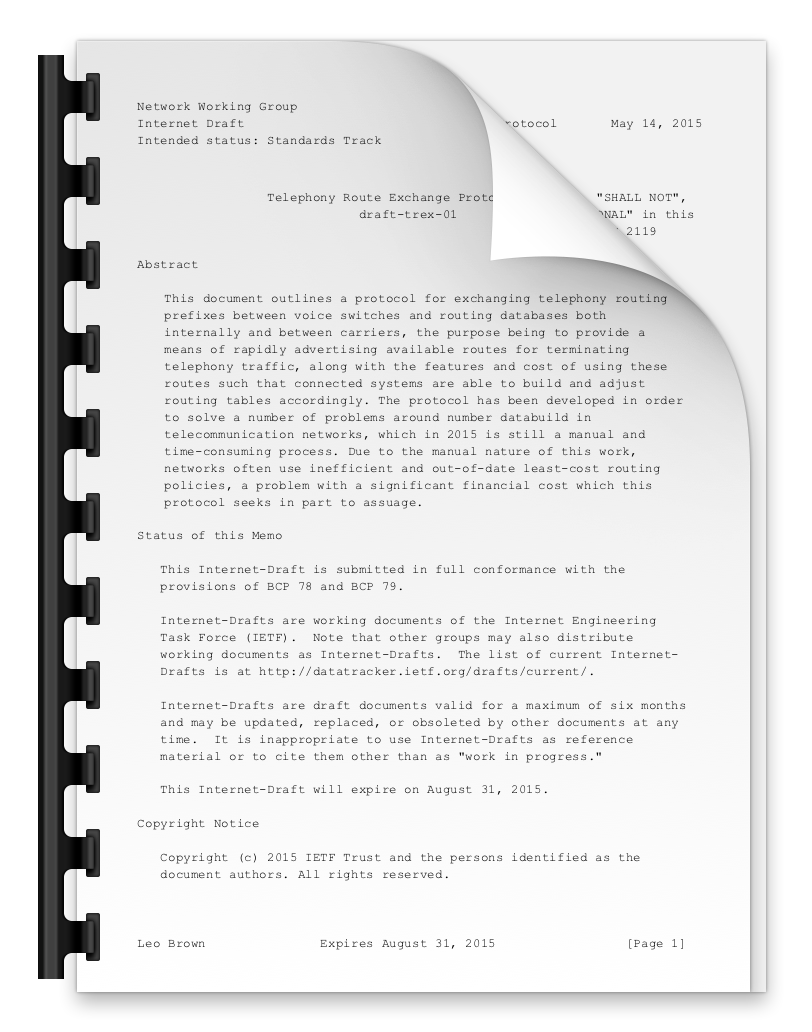Telephony Route Exchange Protocol
With a focus on bringing the worlds of Internetworking and Telecommunications closer, in 2015 I designed a protocol intended to bring the flexibility of the Internet’s Border Gateway Protocol (BGP) to the more baroque and manual telecommunications industry.
In essence, I proposed a BGP for Telecoms.
We know that on the internet there are around half a million route entries – a table whose unwieldiness BGP sought to tame. In telecommunications there are a similar number, around 300,000 prefixes. However, these routes are not treated equally; unlike the net-netural approach of our Internet forefathers, they all come with their own specific set of features and criteria. Primarily this is the price per minute to terminate (connect) calls to the number, but this itself may vary, and may be billed per second, per minute, per connection, or any combination thereof. Numbers may be geographic, national, mobile, nomadic, or in one of many different sub-categories of national and international reachability.
It was this confusion which I hoped to hand over to the machines by drafting T.REX, a working group Request For Comments (RFC) in a format consistent with that which is expected by the internet’s standards committees.
This is more of an academic endeavour, as I did not see it likely that competing networks would ever adopt a single, open standard unless their hands were forced. Telecoms pricing is still a very manual process – ratesheets are hammered out by salespeople meeting their opposite numbers in bars, a mixture of arbitrage, price-fixing and outright fraud produces a hastily-emailed Excel sheet the morning after. Deals are made in ways that ultimately cost consumers and businesses, and there will always be inertia to any automation of this process.
Nonetheless, please feel free to read my proposal to update this prehistoric industry here.
